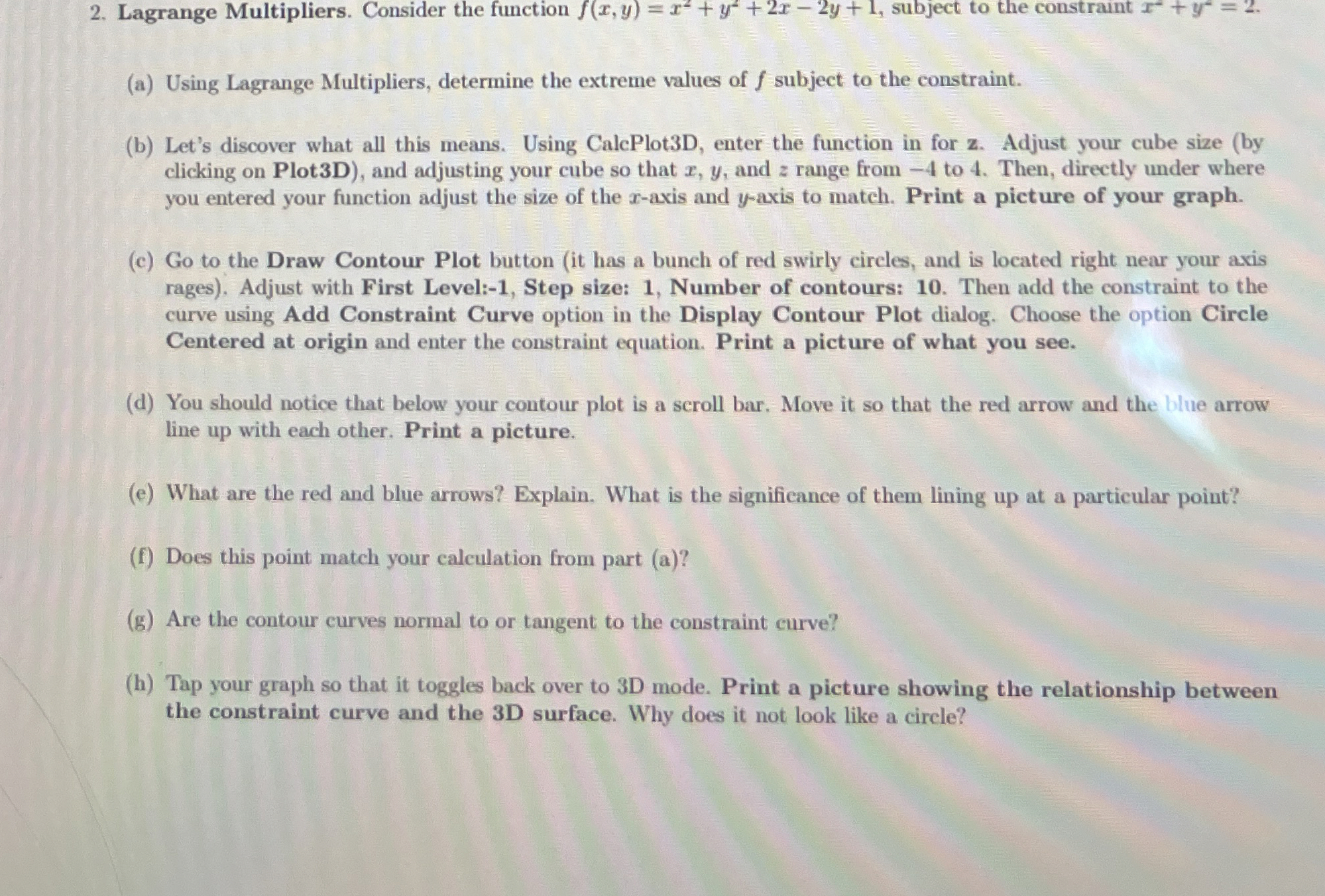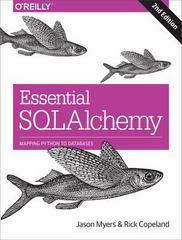Answered step by step
Verified Expert Solution
Question
1 Approved Answer
Lagrange Multipliers. Consider the function f ( x , y ) = x 2 + y 2 + 2 x - 2 y + 1
Lagrange Multipliers. Consider the function subject to the constraint
a Using Lagrange Multipliers, determine the extreme values of subject to the constraint.
b Let's discover what all this means. Using CalcPlotD enter the function in for z Adjust your cube size by clicking on PlotD and adjusting your cube so that and range from to Then, directly under where you entered your function adjust the size of the axis and axis to match. Print a picture of your graph.
c Go to the Draw Contour Plot button it has a bunch of red swirly circles, and is located right near your axis rages Adjust with First Level: Step size: Number of contours: Then add the constraint to the curve using Add Constraint Curve option in the Display Contour Plot dialog. Choose the option Circle Centered at origin and enter the constraint equation. Print a picture of what you see.
d You should notice that below your contour plot is a scroll bar. Move it so that the red arrow and the blue arrow line up with each other. Print a picture.
e What are the red and blue arrows? Explain. What is the significance of them lining up at a particular point?
f Does this point match your calculation from part a
g Are the contour curves normal to or tangent to the constraint curve?
h Tap your graph so that it toggles back over to mode. Print a picture showing the relationship between the constraint curve and the D surface. Why does it not look like a circle?

Step by Step Solution
There are 3 Steps involved in it
Step: 1

Get Instant Access to Expert-Tailored Solutions
See step-by-step solutions with expert insights and AI powered tools for academic success
Step: 2

Step: 3

Ace Your Homework with AI
Get the answers you need in no time with our AI-driven, step-by-step assistance
Get Started


